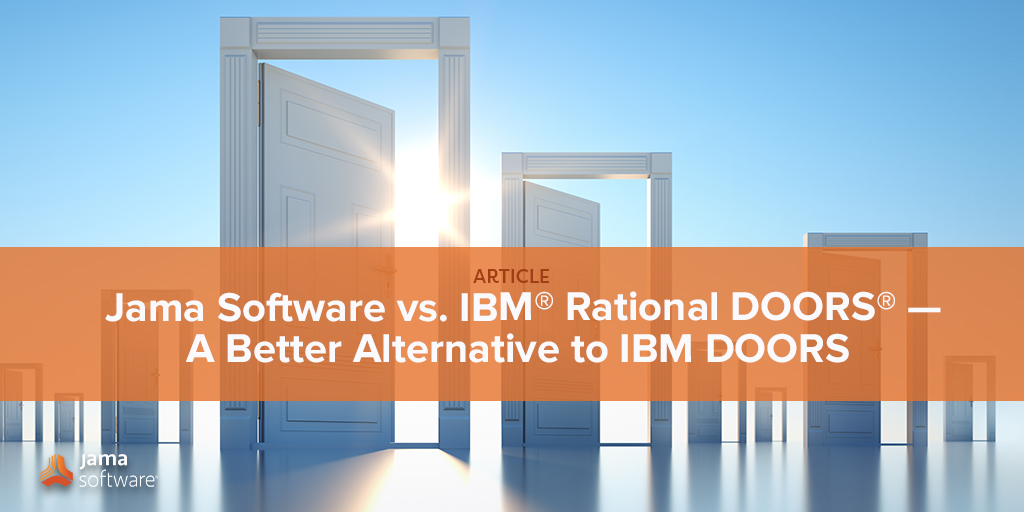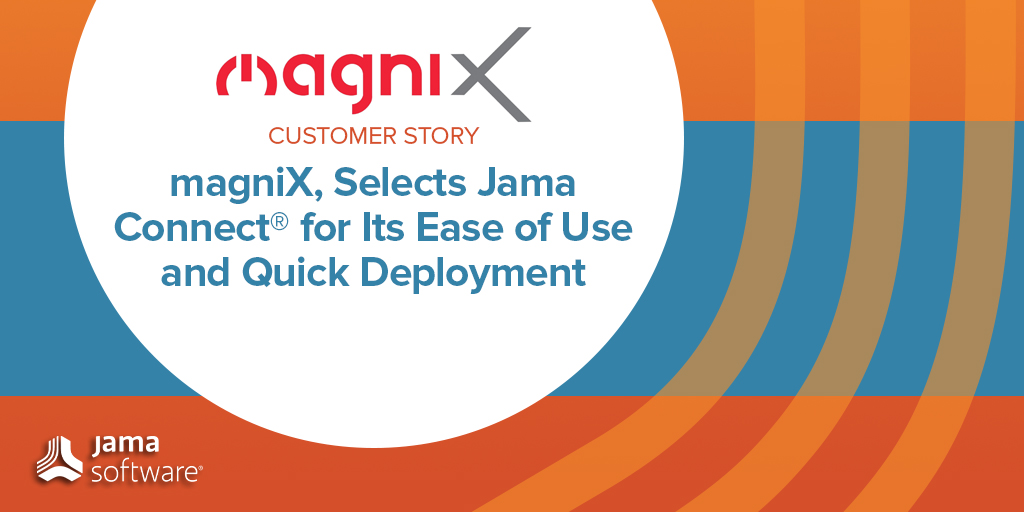
Real-time collaboration and the need for a single source of truth are critical to product development teams. Outdated tools often don’t deliver on these needs, and a misalignment between what a team needs and what a tool provides can hinder success. Requirements management tools that keep pace with your team’s evolving needs can help mitigate potential risks, improve efficiency and achieve faster results.
If you’re currently using IBM DOORS, understanding the difference between the existing solution and more modern options can help you to determine the best next steps for your organization.
Requirements Management and IBM DOORS
Many organizations adopted IBM DOORS because they needed a requirements management tool for their teams and, at the time, it seemed like the best option. But much has changed since the creation of IBM DOORS, and the tool has quickly become outdated. Today’s teams need the ability to not only collaborate in real time but also to do so remotely. They also need to:
- Follow a consistent and common requirements practice.
- Create a single source of truth for requirements, ensuring that everyone on the team is working from the same information.
- Have easy integration so that requirements management is integrated into both core workflows and business to improve productivity.
- Be able to track requirements to develop, test and release new products.
Development teams and critical stakeholders expect the tools they use to be as intuitive as the technology in other areas of their lives. Users of IBM DOORS, however, struggle with usability issues, leading many to not use the solution and opt instead to use outside programs, such as Word or Excel. This creates challenges within workflows, productivity and efficiency, and it introduces potential risks, eliminating the ability to have a single source of truth. But how did IBM DOORS become outdated, and what does it lack?
RELATED ARTICLE: Is There Life After DOORS®?
The Advantages and Disadvantages of IBM DOORS
Organizations are often tempted to maintain an outdated solution, even if it’s underperforming. Why? Because fear and worry exist when it comes to switching to a new solution, users often stay with the existing solution or upgrade to the next offering within the same organization (such as IBM DOORS Next).
The advantage of staying with IBM DOORS is that you don’t need to invest in a new solution and undergo the adoption process that comes with transition. But delaying the switch to a new RM tool only delays the inevitable, because IBM DOORS will eventually go out of support, which will create many challenges, including potential security issues.
A few common misconceptions around the advantages of IBM DOORS include:
- Upgrading to IBM DOORS Next is a less-expensive option. IBM DOORS Next is not IBM DOORS, it’s an entirely new tool with a new approach to requirements. In fact, the only thing the two have in common is in the name. Migrating to IBM DOORS Next might seem like the less-expensive option. However, the work that goes into upgrading to IBM DOORS Next and transitioning to an entirely new RM tool is the same. Moreover, selecting a different solution may help you improve efficiency and achieve ROI faster.
- Customizations will carry over to IBM DOORS Next. Organizations invested money and resources in IBM DOORS customizations (DXL), and you might believe that you can take these innovations with you when you move on to IBM DOORS Next. However, this isn’t the case, and selecting a different solution could allow for you to use fewer customizations.
- Business disruption is more significant with a different RM solution. Eventually, you’ll need to move away from IBM DOORS after the support is discontinued. The right RM solution will help teams more effectively hit deadlines, collaborate with greater ease and improve business outcomes, offsetting any upfront business transition.
- The user experience will suffer. Many people refuse to use IBM DOORS due to a challenging user experience; switching to a new RM tool may accelerate concept, design and validation processes, leading to faster times to market.
If you’re considering making a switch, comparing various options can help determine which RM tool is best aligned with your needs. An innovative tool has the potential to reduce risk for project rework, expensive errors and compliance risks.
What is the best alternative to IBM DOORS?
If you want to move away from IBM DOORS, you aren’t constrained by a specific path to migration. So, what is the best alternative to IBM DOORS?
The answer is found in examining both what your team needs most right now and what they may need in the future.
Collaboration is a critical part of the workflow, especially with the increasing number of people working remotely. Organizations need a tool that supports digital transformation, has greater efficiency and is user-friendly enough that people will use it.
Jama Connect is a modern alternative to traditional legacy platforms, such as IBM DOORS, and was named the overall leader (No. 1) in requirements management software on G2, outranking IBM DOORS Next for implementation, time adoption, ROI and market presence. The tool offers users a reliable solution with:
Simplicity. Jama Connect provides an intuitive and modern user experience. Requirements management software supports multiple development methodologies and engineering disciplines to drive cross-team collaboration and alignment.
Flexibility. Customization is a critical factor to product development teams, which ensures that they get the functionality they need most. Jama Connect provides customization, security development and a licensing model that delivers a lower total cost to ownership.
Open. A poor experience is created when an RM tool doesn’t integrate with other tools that your team wants to use. Jama Connect allows for seamless integration with the most commonly used tools across the product development life cycle. You’ll have access to a powerful network of options to get the right technology stack aligned to your unique business needs.
Simplicity, flexibility and the ability to easily integrate with other tools give your team the resources they need to create greater success in all of their projects. As you consider adopting RM tools such as Jama Connect, it helps to have a quick comparison to help guide your decision.
RELATED: Q&A with a Former IBM® DOORS® Evangelist
IBM DOORS vs. Jama Connect — A quick comparison
Adopting a new RM tool involves asking many questions, including the following: What is the implementation process? What are the costs and ROI? How easy is the tool to use? Consider the following as you weigh the advantages and disadvantages of IBM DOORS Next and Jama Connect.
Adoption. Organizations worry that adopting a new solution will take too much time and money, so they often gravitate to a solution such as IBM DOORS Next, primarily because they assume adoption is easier. However, Jama Connect is actually 2.7x faster to adopt than IBM DOORS Next. Additionally, Jama Connect rated 80% in ease of administration, compared with IBM DOORS Next, which rated 71%.
Return on investment. How fast will your investment pay off? This is a critical question for any new solution, and it’s important to note that ROI is achieved 45% faster with Jama Connect compared with IBM DOORS Next.
Usability. Usability is a key reason many people refuse to use IBM DOORS and instead use email communication, Word, Excel or other outside applications. Users expect their RM experience to be as intuitive as applications in their social environment. Jama Connect rated 85% in “ease of doing business,” compared with IBM DOORS Next, which rated 74%.
Supports remote working. The remote working trend is only expected to grow in the future. IBM DOORS lacks cloud capabilities, creating challenges with working anywhere, anytime. IBM Jama Connect creates a single repository so it’s easy for remote teams to gather, review and execute on requirements. Structured reviews and collaboration enable teams to elicit feedback, review product features in real-time with stakeholders, and track critical decisions across teams and locations.
Moving forward with greater confidence
Products, systems and software development are only getting more complex; so not modernizing your requirements management tool creates potential risks, such as negative outcomes in your product development process.
As your team increasingly requires the ability to adopt, innovate and grow, continuing to use IBM DOORS will only become more difficult and potentially introduce risk into your product development process.
Transitioning to a new requirements management tool provides your team with the resources required to innovate, meet deadlines and succeed. You can more effectively define, manage and validate complex system requirements, all while eliminating the risk and inefficiencies associated with outside documents and legacy systems.
Achieving Live Traceability™ with Jama Connect®
Jama Software®‘s Live Traceability™ allows engineering teams to quickly and easily access the latest and most complete information for any requirement, no matter the stage of development or tools used. This real-time capability boosts productivity by ensuring teams work with the latest data and reduces risks like delays and defects by finding issues early. Research shows that issues found late can be much more expensive to fix, which is why Live Traceability is so important. Jama Connect® helps overcome the limitations of older tools, leading to better results in many industries such as automotive, medical devices, aerospace & defense, and more. To learn more, visit Buyer’s Guide: Selecting a Requirements Management and Traceability Solution

